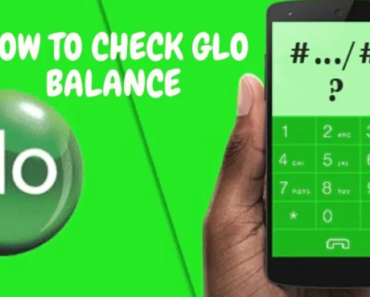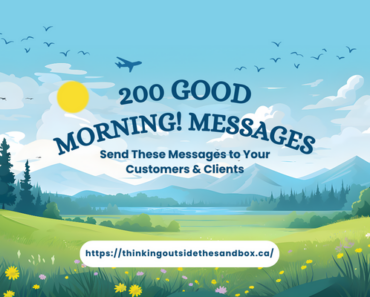
Image Source: iStock
Are you struggling to make your mark in the digital market? Have you been wondering how to effectively communicate your mission to others and attract clients?
In today’s work-from-home era, having a compelling and unique personal brand statement is absolutely essential for success.
Do you know how to effectively share your mission with others? How can you make potential clients or investors really interested in what you offer? The key is having a unique and engaging brand statement that sets you apart.
Many people think they have their business figured out, but they might be too vague or too specialized. For example, just mentioning your job title isn’t enough. You need to explain what you do, who you help, and how you solve problems.
We’ll show you a simple formula to create an engaging brand statement that will grab your target audience’s attention and impress potential investors.
Let’s make your brand shine and leave a lasting impact!
Table of Contents
What is a Personal Brand Statement?
A Personal Brand Statement is like a friendly introduction that shows what you’re good at. You often see experts using it on their websites, social media bios, and even in their graphics.
Imagine you’re at a networking event, and someone comes up to introduce themselves. Well, this statement is what you’d share with them while saying hello.
It’s not as short as a slogan, but not as long as a big speech. It’s just the right size to get people interested in what you do.
Your Personal Brand Statement should be unique to you. It shouldn’t look like anyone else’s, and that’s a good thing. These personal branding statements are powerful tools to tell a lot of people about your special ideas.
The problem with establishing your personal brand online and statement is that it takes some serious consideration. The first sentence that comes to mind when you think of your personal brand probably shouldn’t be your final statement.
For example, if you’re a marketing consultant. Your personal brand statement could be: “I help businesses attract more clients and boost revenue by positioning themselves as experts, growing their audience, and attracting the right clients. Join my free masterclass today to learn how!”
“You really need to narrow down what it is about your business and your brand that makes you completely different from your competition.”
Try to be as specific as possible for your target demographic. Then make them think about what they’ll miss if they ignore your invitation.
Why is Having a Brand Statement Important?
No matter your job, profession, or industry, a powerful personal brand statement is vital for communicating your value and expertise in a way that makes people interested in knowing more about you. Once you create a compelling personal brand statement, you can use it in different places:
- Social media profiles: Enhance your bio on social media platforms with a personal branding statement.
- Elevator Pitch: A well-crafted brand statement acts as your elevator pitch, allowing you to quickly and effectively convey your unique qualities and what you bring to the table.
- Resume: Stand out to hiring managers by placing your strong personal brand statement near your name at the top of your resume.
- Networking Events: At networking events, a clear and engaging brand statement can make memorable first impressions, leading to meaningful connections and opportunities.
- Email Signatures: Including your brand statement in your email signature helps reinforce your professional identity in every communication.
How Long Should a Brand Statement Be?
As a general rule, you want your personal brand statement to be memorable, just like your favorite jingle that sticks in your head. While you might be tempted to share the whole story of your career, people won’t remember all the details. They need a reason to take notice of your brand, like a beautiful garden that catches their attention.
So, you can find personal brand statement examples of different lengths.
Most of us can summarize our favorite movies or novels in a few sentences, even though the actual movie or book is much longer. It shows that impressions last a long time, and we can focus on what’s important.
Moreover, people don’t always have time for long pitches. They prefer short and catchy summaries. Think of your brand statement as a clever catchphrase that embodies what you want people to know and appreciate about you.
How to Create Your Own Personal Brand Statement?
When crafting your personal brand statement, focus on expressing who you are and what makes you unique in the market. Each word should highlight the special value you bring. Start by identifying the impactful language used in your niche.
Your statement should cover three important aspects:
“Your Action” – This is what you do or offer.
“Your Target Client” – It’s the specific audience you want to serve.
“Your Solution” – This represents how you provide value to your target client.
In simple terms, use this formula to shape your personal brand:
Your Action + Your Target Client = Your Solution
You can arrange the order differently, like Your Action + Your Solution = Your Target Client. The key is to ensure that all three elements are included in your statement to make it effective.
-
Your Action
In this part of your statement, we won’t go into great detail about what you do. Instead, it should be intentionally vague.
To start your statement, consider using superficial phrases like:
- “I help…”
- “I build…”
- “I create…”
- “I turn…”
Your goal is to identify the verb that truly captures what you do.
Notice that all these words are action verbs. They bring life and energy to your personal brand statement, showing that you actively help clients solve their problems with passion and vitality.
Your personal brand statement should not be vague or anonymous. You need to strike the right balance between providing enough information and not overwhelming your audience.
Being too ambiguous or stating the obvious can divert potential clients from recognizing your true value. Mere association with the industry doesn’t do justice to your expertise.
Once you find that perfect verb to begin your statement, delve right into your ideal client and the specific problem you can solve for them.
-
Your Target Client
Your customers should quickly understand your value when they see or read your brand message. It’s important to get them thinking about being part of your mission from the start. Your brand message doesn’t need to list exactly who you’re targeting. You can just mention them like this:
- Customers
- Clients
- Startups
- CEOs
- Entrepreneurs
If you know well who you want to help, you can use some describing words to make them feel like you’re talking to them. For instance, you can say:
- Solo Entrepreneurs
- Big Online Stores
- Tech Startup Bosses
- Women in LA
A smart way to grab the attention of the people you want to help is by showing some evidence in your message. Don’t hide your specialty. Look for examples of brand messages that explain what you do clearly.
Simple phrases like “I help my clients create strong personal brands” are good. But unclear statements won’t make you stand out. Your words should build trust, make a good name for you, and show promises you can keep.
You want people to trust that you can give the best solution, so much that they want to know more. You can use numbers, for example, to show how many clients you’ve already helped.
This shows your expertise and gives the feeling that you’re in demand. You can also add a place (like “women in LA,” “men in New York,” etc.) if you have a shop or you’re well-known in your local area.
It’s okay to use fewer words to describe who you want to help in your message. If your business helps lots of different people, then keep it simple. If you’re a fitness coach, you don’t want to push away potential male clients by saying that you “help women in LA.”
So, so far, we have What You Do + Who You Want to Help. Let’s use the fitness coach as an example. If a fitness coach’s ideal clients are women who live in LA, their brand message might start like this:
“I help + women in LA…”
-
Your Solution
So, what does this fitness coach do for women in LA? This is the main point. This is what you do that no one else does. A brand message that’s too general might be like, “I help women in LA get fit!”
Yes, they do that. They’re fitness coaches. But it’s not a very good main point, right?
No – you want to make your point clear at the end of your brand message. Your brand message should make your ideal customer feel something. They should be excited or feel relief because they’ve finally found an expert who can solve their problem.
What You Offer should talk about their problem and give a solution at the same time. For example, this fitness coach’s brand message could end like this:
“I help women in LA stick to a healthier life in just 40 days!”
Do you see the different parts of the brand message formula? “I help + women in LA + stick to a healthier life in just 40 days!”
Add Emotions in Statement That Make Customers Want More
Think about a time when you hired a professional to help with a job. Let’s say it was a website designer. You had many options, so how did you pick the person you hired? Their brand message probably created a feeling that made you say yes.
When you were looking for a web designer, you likely compared several options. But you probably didn’t spend hours reading long papers and data. You used their brand message to help you decide.
You weren’t sure about them until you knew they could give solutions and help avoid future problems. Your potential customers are doing the same. And they’re waiting for you to answer.
Here’s a brand message that works:
“Helping my clients make strong personal brands to grow their business and sales.” That’s my brand message, and it works for many reasons. But mainly, it tells my story and reassures potential customers that I can give real results for their business.
Change Things Up!
You can also change your message using the formula What You Do + What You Offer = Who You Want to Help. An example could look like this:
“I create + 40-day health plans for + women in LA who want to start a new lifestyle!”
If we ended this brand message at “Women in LA,” it would be too vague. The 40-day health plan might be enough to get your perfect client interested, but the last part talks directly to your target client.
Many online fitness coaches sell X-Day plans, but yours can help them stick to it. They’ll ask themselves, “What’s so special about this 40-day plan that will finally help me stick to a healthier lifestyle?”
And that’s when you’ll start getting lots of questions.
Personal Brand Statement Examples
Even though this formula is quite simple, some business people still don’t nail it. If you’re too general, people might just roll their eyes.
“Another product to help with my diet, yeah right,” they may think.
On the other hand, if you’re too detailed, you might lose potential customers. Plus, it’ll be hard to say a simple message.
Can you imagine saying, “I’m a coach who helps men and women in LA find the best workout and diet to lose weight in just 40 days!”? Doesn’t sound likely, does it?
It not only sounds like you’re selling something, but it’s also too long. You won’t leave them wondering. So, they won’t ask you more about your business.
Examples of Poor Personal Brand Statements
I won’t share real examples of personal brand statements I’ve seen online (though there are plenty). Instead, I’ll create a few and highlight one thing in each that could push your customers (or investors) away.
-
“I own a tech startup.
If you asked someone what their job is and they gave this response, wouldn’t you instantly think, “And what else?”
People don’t like to search for information. That’s why the formula I’ve given you is so helpful. Let them know who you are, who you assist, and why your solution stands out.
-
“I assist entrepreneurs by creating their online content such as blogs, videos, and photography!”
While this statement covers all the main points, it doesn’t leave anything to the imagination. Plus, there are lots of content creators— what makes your blogs, videos, and photography stand out?
Also, if your personal brand statement could be copied by anyone else in your field, you might need to rethink it. No two personal brands should be identical, so your personal brand statement should be distinctive.
-
“I’m a real estate agent who assists people in buying and selling homes in Santa Monica, California.”
In this case, the personal brand is too vague. There are many real estate agents in Santa Monica. This statement only describes what a real estate agent does. It should underscore why this specific real estate agent differs from the one next door.
Do they specialize in foreclosures, first-time home buyers, or luxury properties above $500K? This personal brand needs a bit more personality to make its target client like, trust, and know them.
Good Examples of Personal Brand Statements
Let’s look at some real-life personal brand statement examples. These individuals have been running their businesses for some time and understand their target audience and their needs well.
-
“Helping You Succeed Through Online Marketing!”
Neil Patel uses this as his personal brand statement, and it’s visible right when you look up his name in Google.
It might seem too broad, but when you’re as famous as Neil Patel, you can keep things a bit more open. It still follows the structure: Your Action + Your Target Client = Your Solution.
He leaves out “I”, and his target client is just “you”. But he makes it clear that he’s there to help find a solution (“success through online marketing”).
On his website, he immediately asks, “Do you want more traffic?” This question helps specify how he aids in succeeding through online marketing, making people pause and think about their own business, and nudging them to work with him.
-
“I help entrepreneurs grow social platforms.”
Jasmine Star states this directly in her Instagram bio, an ideal place for your personal brand statement. With nearly half a million followers, it’s evident that her personal brand statement works well.
She goes into more detail on her website, saying she is “A Photographer & Business Strategist who empowers entrepreneurs to build a brand, market it on social media, and create a life they love.”
-
“I empower businesses to strengthen their digital footprint.
“John Doe uses this as his LinkedIn headline, an excellent spot to showcase your personal brand statement. With a strong following and a history of successful projects, his personal brand statement clearly resonates with his audience. On his website, he provides further information, stating he is “A Digital Marketing Expert & Business Strategist, helping companies enhance their online presence, optimize their marketing strategies, and shape a business they’re proud of.”
Final Thoughts
Your personal brand statement will be seen everywhere you promote your business. That’s why it’s important to get it right. If you can’t find the right words at first, don’t worry. Keep tweaking your personal brand statement combines, until it gives you the results you want.
Remember, your statement will be on websites and social media. So, make sure your pictures or visuals are as engaging as the words you use.
Check out! 1200+ Unique & Catchy Event Names Ideas for Your Business.
FAQs ( Frequently Asked Questions)
Q: What is essential to include in a personal brand statement?
Ans: In a personal brand statement, you should clearly state who you are, who you help, and how your approach or solution is unique. This gives a clear picture of what you do and what makes you stand out.
Q: What is the best way to showcase my personal brand statement?
Ans: Your personal brand statement can be featured in various places like your resume, website, business cards, and social media profiles. Displaying it in these places ensures potential employers or clients can easily see it when reviewing your accomplishments or profile.
Q: What common difficulties might I encounter when developing my personal brand?
Ans: Some challenges when building your personal brand could include not knowing where to start, having trouble identifying your niche, experiencing self-doubt or imposter syndrome, and staying consistent and motivated. You might also struggle with choosing the best channels to express your personal brand.
Q: How can I enhance my personal brand’s visibility?
Ans: One effective way to increase your personal brand’s visibility is to regularly create content. This could be in the form of articles, social media posts, ebooks, podcast episodes, or even YouTube videos. Remember to think about a content strategy and use social media platforms that align with your personal brand.
Q: Is personal branding necessary for everyone?
Ans: Personal branding is critical for anyone who wishes to achieve their goals and grow their career. It helps differentiate you from others, makes you memorable in your field, and can open doors to opportunities.
Learn more: 10 Best Brands for Vegan Tshirts in 2023







